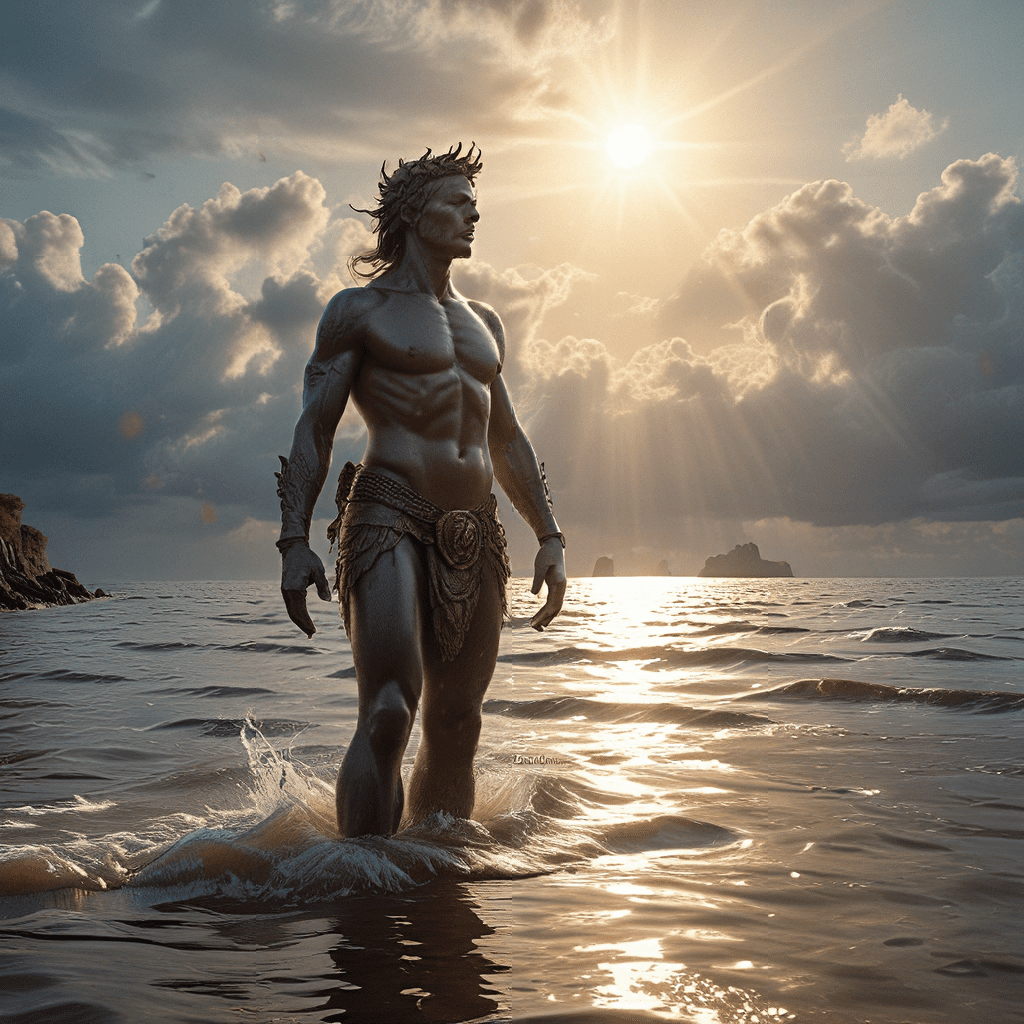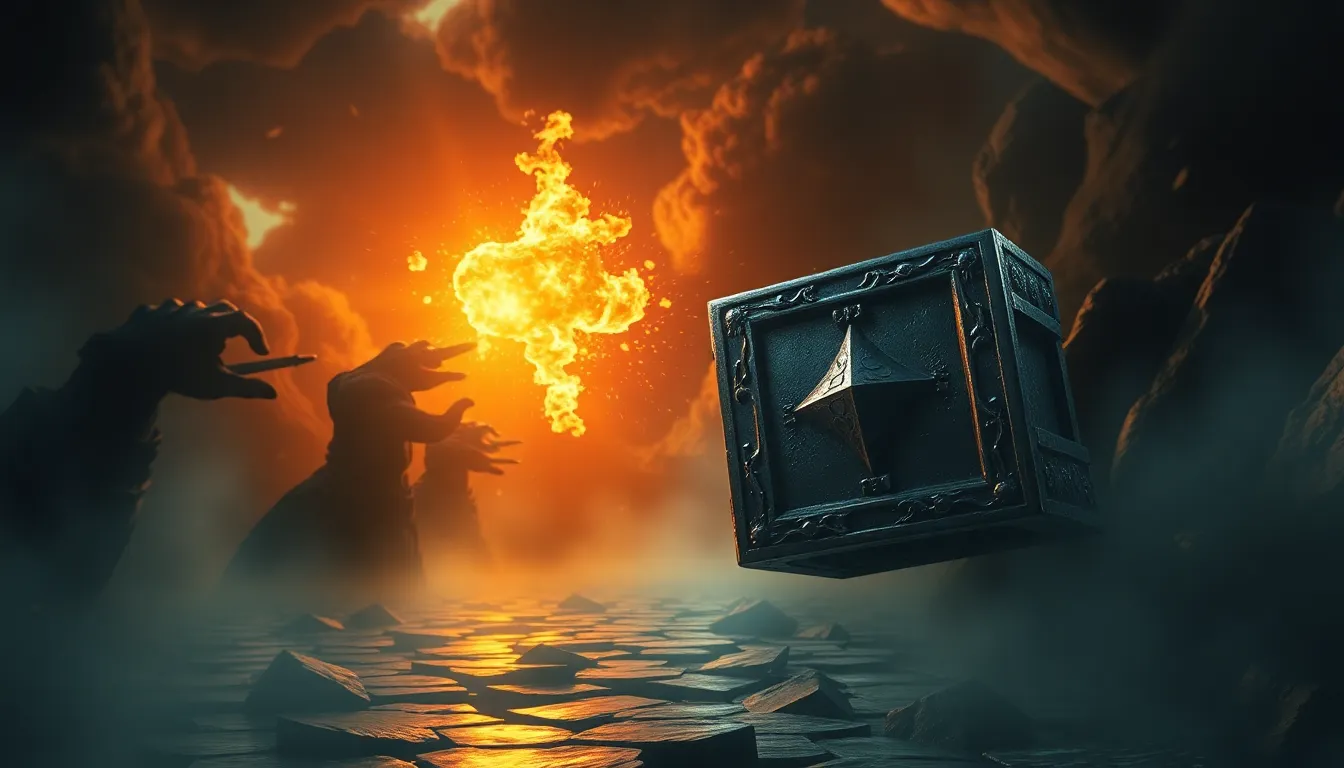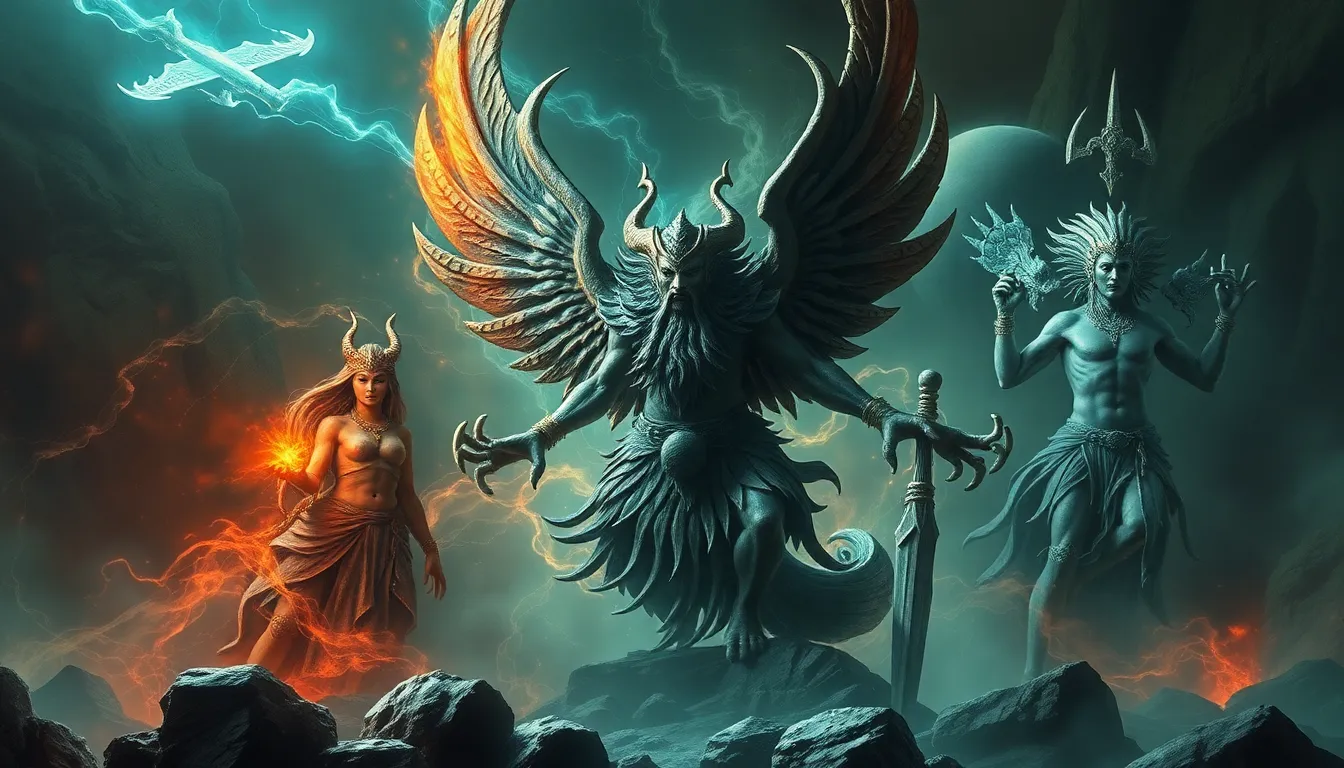Baltic Mythology: The Concept of Transformation and Evolution
In the rich tapestry of Baltic mythology, transformation and evolution are central themes, weaving through tales of gods, mythical beings, and the very fabric of the universe itself. The Balts, an ancient people inhabiting the lands of present-day Latvia, Lithuania, and Estonia, held a deep reverence for the natural world, believing it to be imbued with spiritual power and subject to constant change. This understanding of transformation, not as a disruptive force but as a natural and cyclical process, permeates their mythology, shaping their worldview and influencing their rituals and traditions.
Introduction: A World in Flux
The Baltic worldview was one of constant flux, a world where nothing remained static. The deities themselves embodied change, and the natural world mirrored this dynamic energy. The changing seasons, the waxing and waning of the moon, the ebb and flow of the tides—all these phenomena were seen as reflections of the fundamental principle of transformation. This dynamic approach to the world was deeply rooted in their understanding of the universe as a living, breathing entity, influenced by powerful deities who governed every aspect of existence.
The Deities of Change: Exploring Key Figures
Within the pantheon of Baltic gods, several stand out for their association with transformation and evolution. Dievas, the Sky God, was seen as the ultimate source of creation and change, governing the cosmic dance of life and death. Perkūnas, the thunder god, was known for his power to renew and revitalize, wielding the force of lightning to cleanse the earth and usher in new beginnings. Laima, the goddess of destiny, played a pivotal role in shaping the lives of individuals, weaving threads of fate and directing their path through various stages of transformation.
Then there was Velnias, the trickster god, a complex and paradoxical figure who represented the chaotic and unpredictable nature of change. Sometimes mischievous, sometimes menacing, Velnias served as a reminder that transformation could be both beneficial and disruptive, a force that could lead to growth and destruction alike. These deities, each with their unique roles and attributes, served as potent symbols of the ever-present forces of change that shaped the Baltic worldview.
The Cycle of Seasons: A Metaphor for Transformation
The cycle of seasons held profound significance for the Balts, serving as a vivid metaphor for the transformative nature of life. The arrival of spring, with its burgeoning greenery and new life, symbolized rebirth and renewal. The warmth of summer offered a period of growth and abundance, while autumn, with its harvest and falling leaves, signaled a time of reflection and preparation for the coming winter. Winter, the season of darkness and dormancy, represented a time of rest and introspection, a period of quietude before the cycle began anew.
This cyclical pattern of change, mirrored in the natural world, deeply resonated with the Baltic understanding of life as a constant process of transformation. Their myths and stories reflected this cycle, weaving narratives of gods who fought to restore balance, heroes who faced trials and emerged transformed, and individuals who navigated the challenges of existence through various stages of growth and change.
Mythical Beings and Shapeshifting: Bears, Wolves, and the Human Form
The realm of Baltic mythology was populated by a diverse array of mythical beings, many of whom possessed the ability to transform themselves. Bears, wolves, and other animals were often viewed as powerful intermediaries between the human and the divine, possessing the ability to shift between forms, embodying the fluidity of the natural world.
These shapeshifting abilities were not limited to mythical beings. Human characters in Baltic folklore also possessed the ability to transform, often taking on animal forms to gain power, wisdom, or to escape danger. This theme of transformation, both literal and metaphorical, underscored the Balts’ belief that the boundaries between the human and the animal, the natural and the supernatural, were fluid and permeable.
The Power of Ritual: Harnessing Transformation through Ceremony
For the Balts, rituals played a crucial role in navigating the forces of transformation. Ceremonies were designed to harness the power of the gods and the natural world, influencing the course of events and facilitating individual and collective change. From fertility rites that sought to ensure abundant harvests to rituals of healing that aimed to restore balance and well-being, each ceremony was imbued with symbolic meaning and intended to affect the flow of transformation.
One of the most significant Baltic rituals was the annual solstice celebration, a time of great importance for the Balts. The summer solstice, marking the longest day of the year, represented a time of peak abundance and vitality. Rituals performed during this time were designed to celebrate the bounty of the earth and to ensure continued prosperity. The winter solstice, marking the shortest day of the year, was a time of reflection and introspection, a period for renewing one’s connection to the natural cycle of change. Rituals during this time focused on honoring the deities and seeking guidance for the coming year.
These rituals not only served practical purposes, but also provided a powerful framework for understanding the nature of transformation. Through symbolic action and collective participation, the Balts reinforced their belief in a world where change was constant and where the power to influence that change resided within themselves and in their relationship with the divine.
Theories of Transformation:
Cosmogonic Transformation: The Creation of the World and the Baltic Universe
Baltic mythology offers a rich tapestry of creation myths, each reflecting a unique understanding of the universe’s origin. In one prominent myth, the world is formed from the body of a giant, Pērkons, with his bones becoming mountains, his blood forming rivers, and his hair transforming into forests. This myth highlights the cyclical nature of creation and destruction, emphasizing that the universe is a dynamic entity in constant flux.
Another creation myth tells the story of Dievas, the Sky God, who descends from the heavens and creates the earth. Through this act of creation, Dievas brings order to chaos, establishing the foundations of the world as we know it. This myth underscores the role of divine intervention in shaping the universe, highlighting the power of transformation as a force that brings about both order and new beginnings.
Human Transformation: The Journey of the Soul and Reincarnation
The Balts believed in the transmigration of souls, a concept that emphasized the cycle of life, death, and rebirth. Upon death, the soul was believed to embark on a journey to the afterlife, where it would be judged and then reincarnated into a new life. This belief underscored the ongoing nature of transformation, emphasizing that life was not a singular event but a continuous cycle of change.
The Balts also believed in the power of individual transformation, recognizing that people could change and evolve over time. Through trials, challenges, and experiences, individuals could grow and develop, becoming more knowledgeable, wiser, and more connected to the divine. This belief in the potential for human transformation, along with the idea of reincarnation, provided a framework for understanding the cyclical nature of life and the ongoing possibilities for growth and change.
Social Transformation: Mythological Narratives Reflecting Shifting Power Structures
Baltic mythology also provided insights into the social and political transformations of the Balts. The rise and fall of gods, the battles between heroes and villains, and the narratives of social upheaval reflected the changing power structures, shifting alliances, and evolving cultural norms of the Balts.
For example, myths about the trickster god Velnias often served as cautionary tales, highlighting the dangers of deceit and the consequences of manipulating others for personal gain. These stories reflected the evolving social norms and the importance of maintaining harmony within the community. By exploring these themes through their mythology, the Balts provided a framework for understanding the dynamics of social power and the importance of responsible leadership in shaping a just and equitable society.
The Role of Transformation in Baltic Folklore
Transformation is a pervasive theme in Baltic folklore, appearing in myths, legends, folk tales, and songs. These narratives often explore the consequences of choices, the transformative power of love and loss, and the journey of the individual through various stages of life. Through these tales, the Balts conveyed their understanding of the natural world, their connection to the divine, and their belief in the inherent potential for change within themselves and in the world around them.
One of the most enduring examples of transformation in Baltic folklore is the story of the “Laumės,” benevolent nature spirits who can shape-shift, often appearing as beautiful women adorned with flowers. These Laumės are responsible for protecting children, guiding lost travelers, and ensuring the fertility of the land. Their ability to transform into different forms reflects the fluidity and interconnectedness of the natural world and its inhabitants.
Conclusion: A Legacy of Change and Evolution
Baltic mythology offers a rich and complex understanding of transformation, viewing it as a fundamental principle that governs the universe, shapes the lives of individuals, and influences the course of history. The Balts recognized the cyclical nature of change, embracing the ebb and flow of life, death, and rebirth as an essential part of existence.
Their myths and rituals, imbued with symbolism and meaning, provided a framework for understanding and navigating the forces of transformation. From the deities who embodied change to the mythical beings who could shapeshift, from the cycle of seasons to the journey of the soul, Baltic mythology underscores the importance of embracing change, adapting to new circumstances, and recognizing the inherent potential for evolution within ourselves and the world around us.
Influence of Baltic Mythology on Modern Culture
The enduring influence of Baltic mythology can be seen in various aspects of modern culture. From art and literature to music and film, the themes of transformation, the reverence for nature, and the power of myth continue to resonate with audiences today. Contemporary artists draw inspiration from the rich symbolism and imagery of Baltic mythology, creating works that explore themes of identity, resilience, and the cyclical nature of life.
The Balts’ understanding of the interconnectedness of the world, their reverence for the natural world, and their belief in the transformative power of the human spirit continue to inspire contemporary thinkers and creatives, reminding us of the importance of embracing change, acknowledging our interconnectedness, and honoring the legacy of the past as we navigate the challenges of the present and the possibilities of the future.
FAQ
What are the key deities associated with transformation in Baltic mythology?
- Dievas (Sky God) – The ultimate source of creation and change.
- Perkūnas (Thunder God) – Known for his power to renew and revitalize.
- Laima (Goddess of Destiny) – Shapes the lives of individuals, guiding them through transformation.
- Velnias (Trickster God) – Represents the chaotic and unpredictable nature of change.
How does the cycle of seasons serve as a metaphor for transformation in Baltic mythology?
The cyclical pattern of the seasons mirrors the Balts' belief in the ongoing process of transformation in life. Spring symbolizes rebirth, summer signifies growth, autumn represents reflection, and winter represents rest before the cycle begins anew.
What is the significance of shapeshifting in Baltic folklore?
Shapeshifting, often attributed to both mythical beings and human characters, highlights the Balts' belief in the fluidity of boundaries between the human and animal realms, the natural and supernatural.
Why were rituals important to the Balts?
Rituals were tools for harnessing the power of the gods and the natural world, influencing the course of events and facilitating transformation on both individual and collective levels.
What are some examples of the influence of Baltic mythology on modern culture?
Modern artists, writers, and musicians continue to draw inspiration from the rich symbolism and themes found in Baltic mythology, exploring themes of identity, resilience, and the cyclical nature of life.



